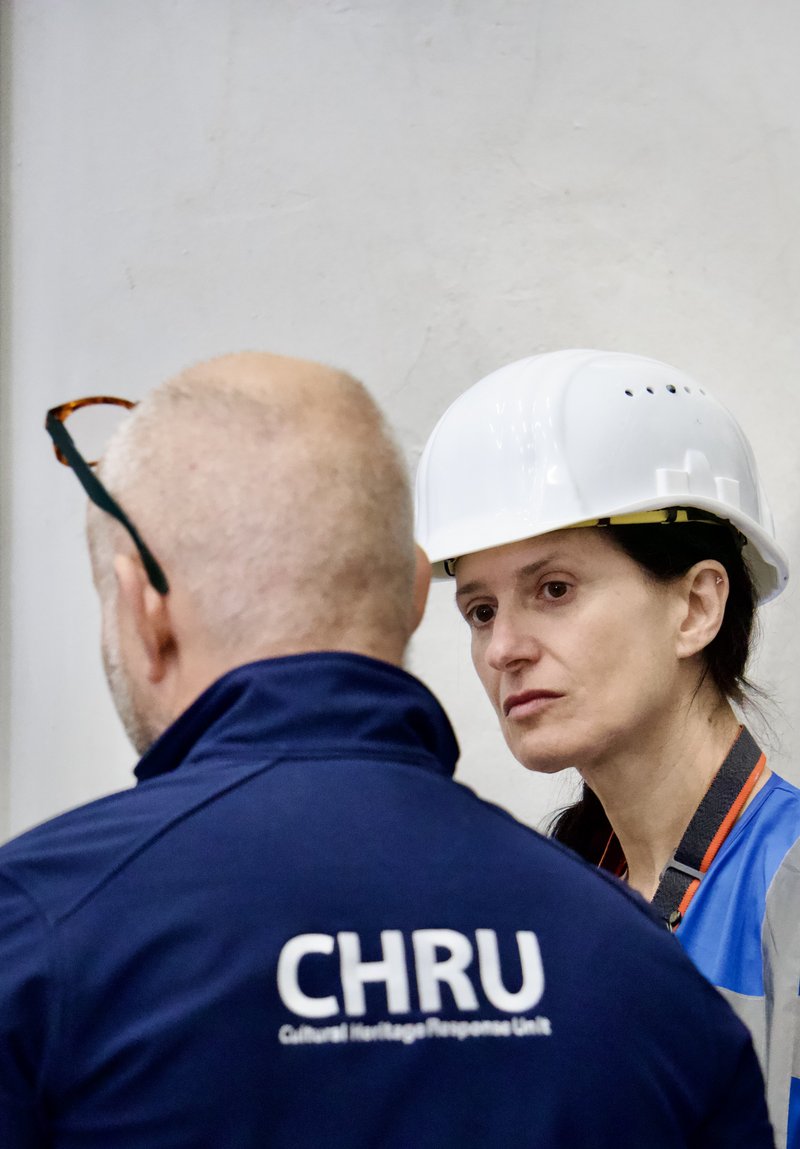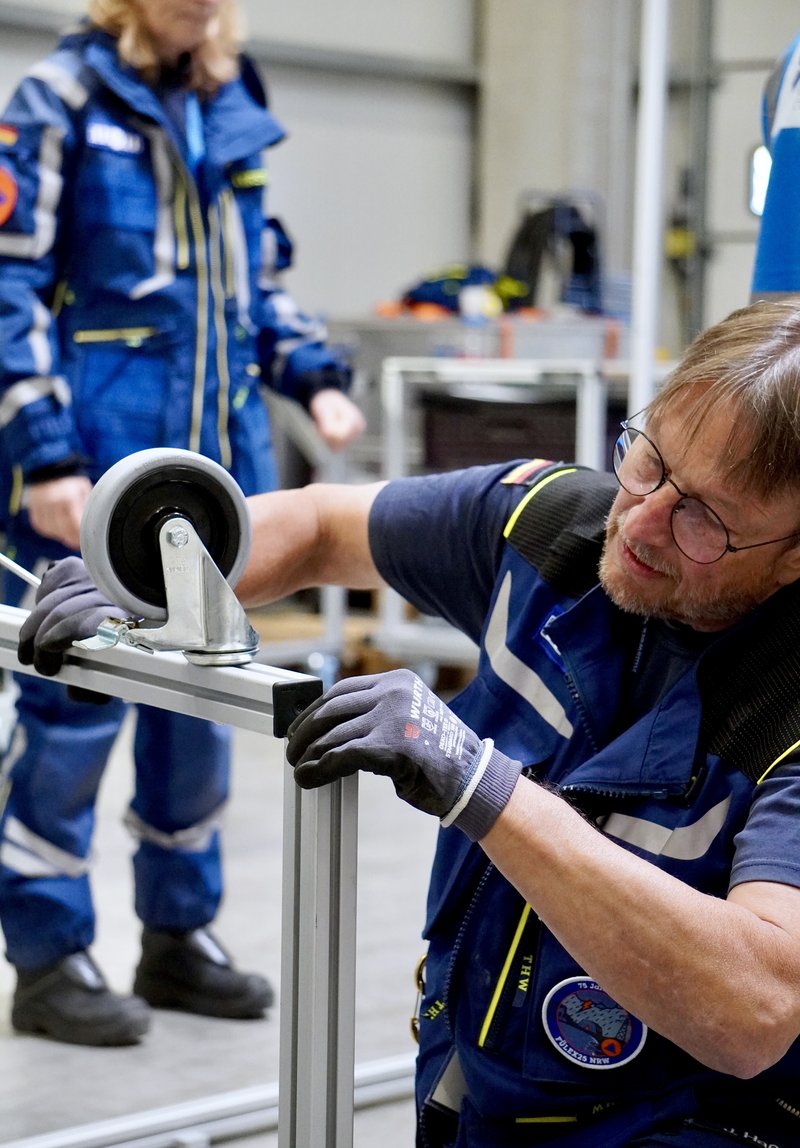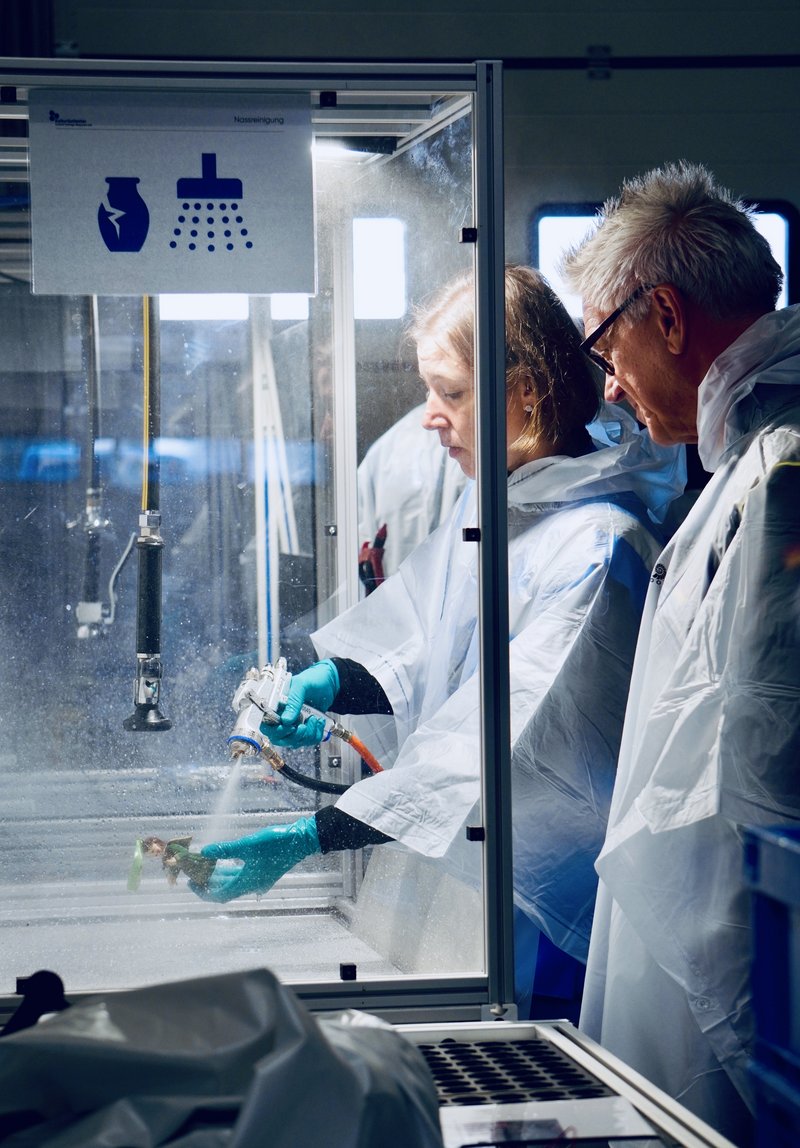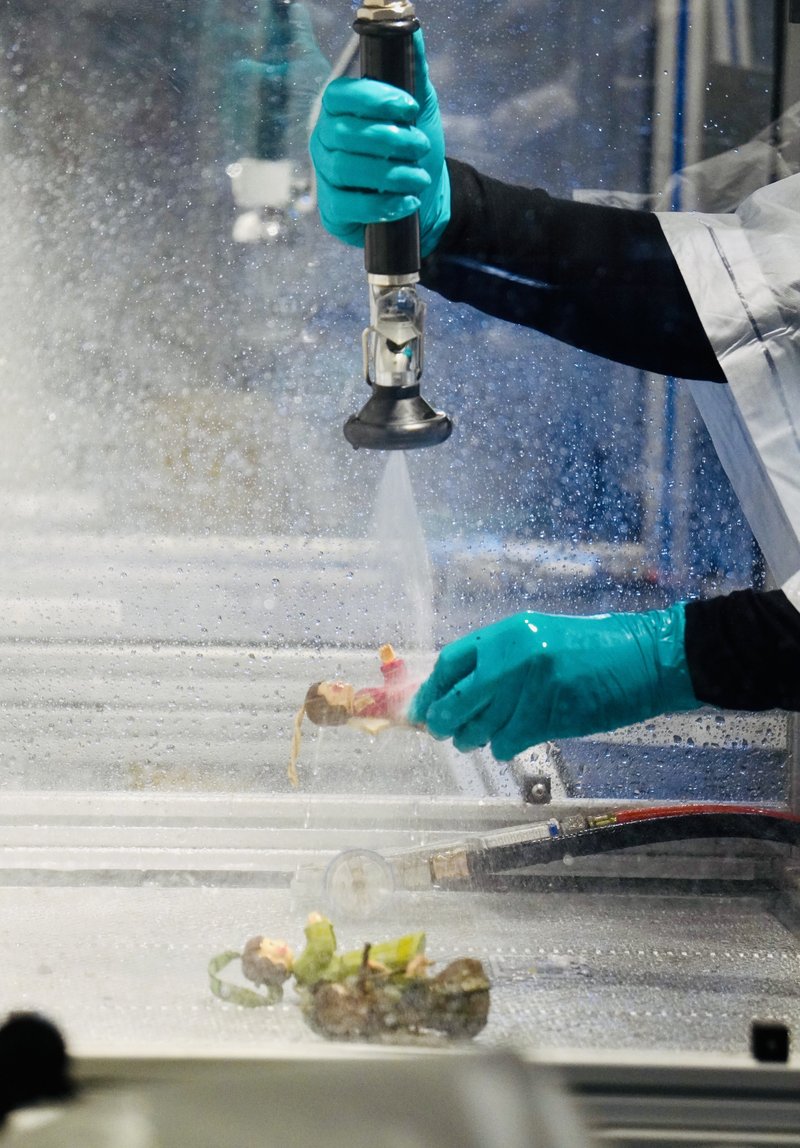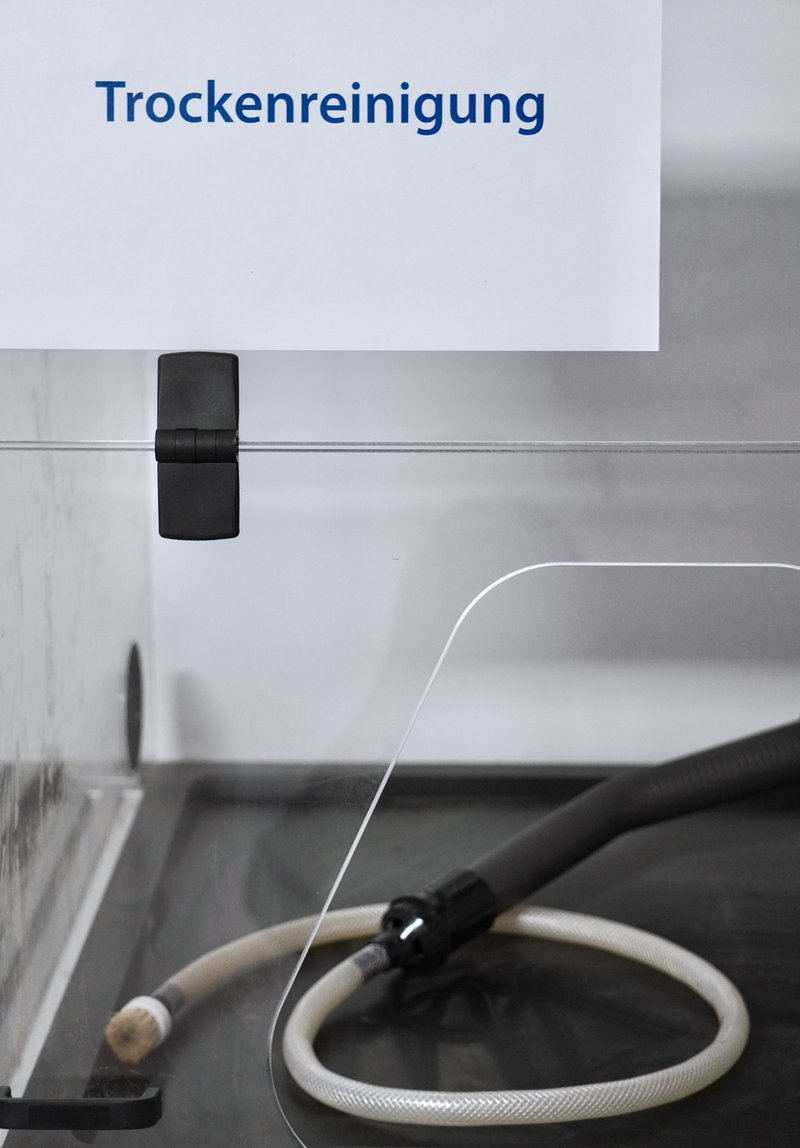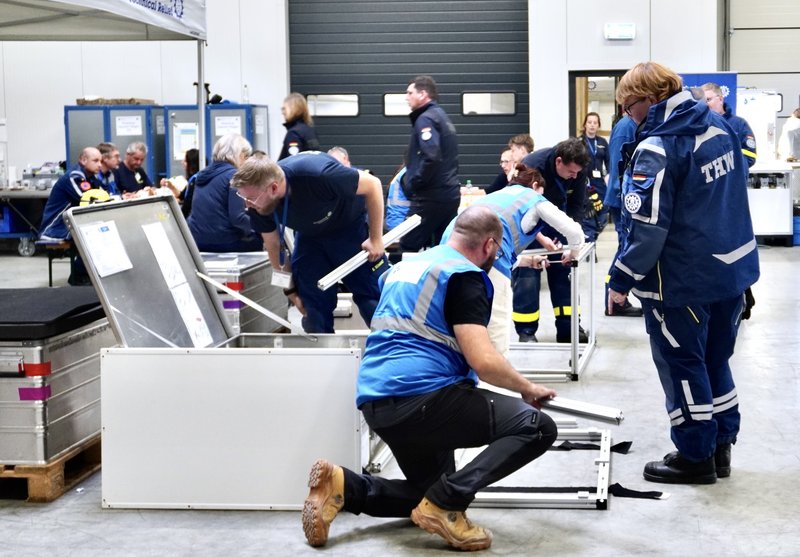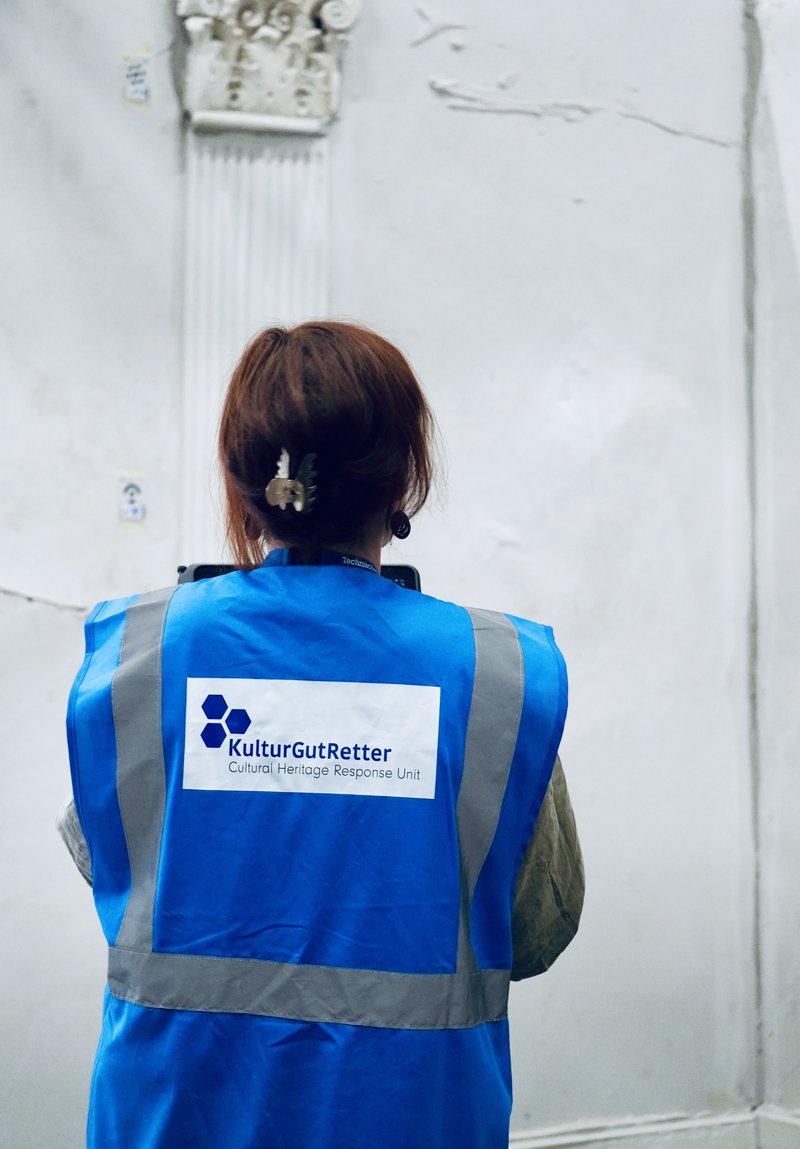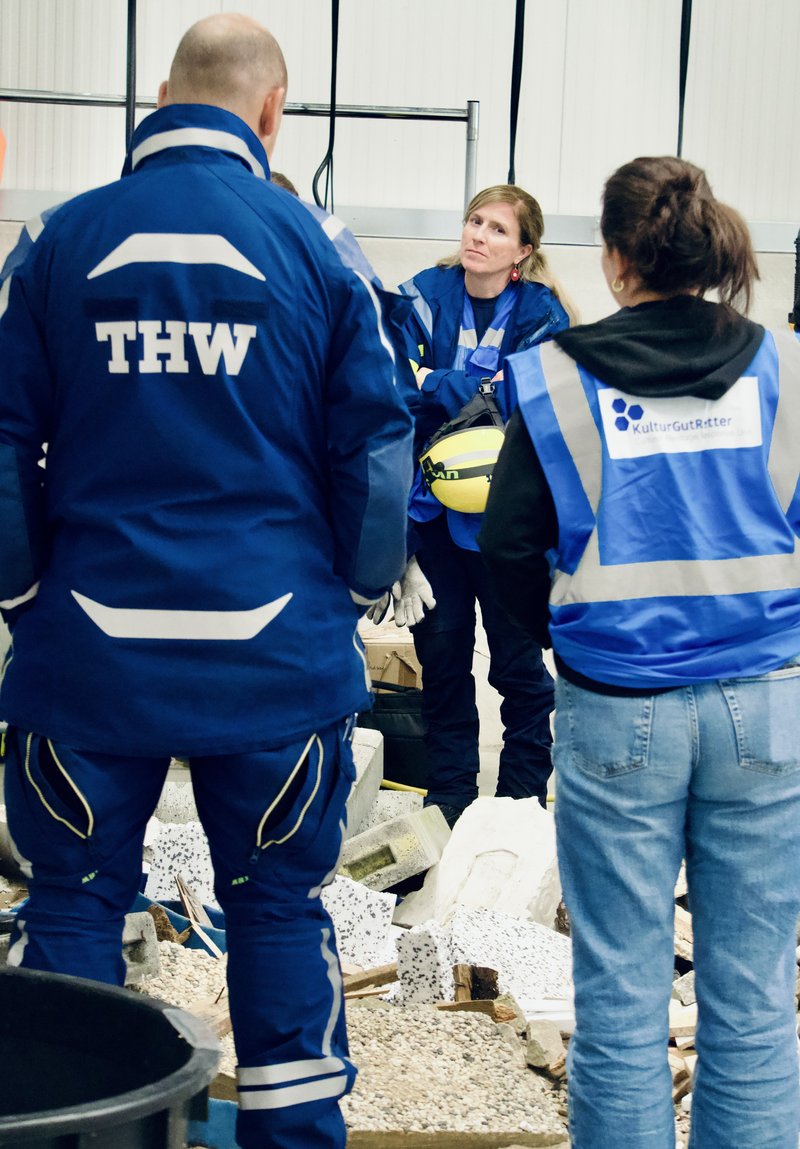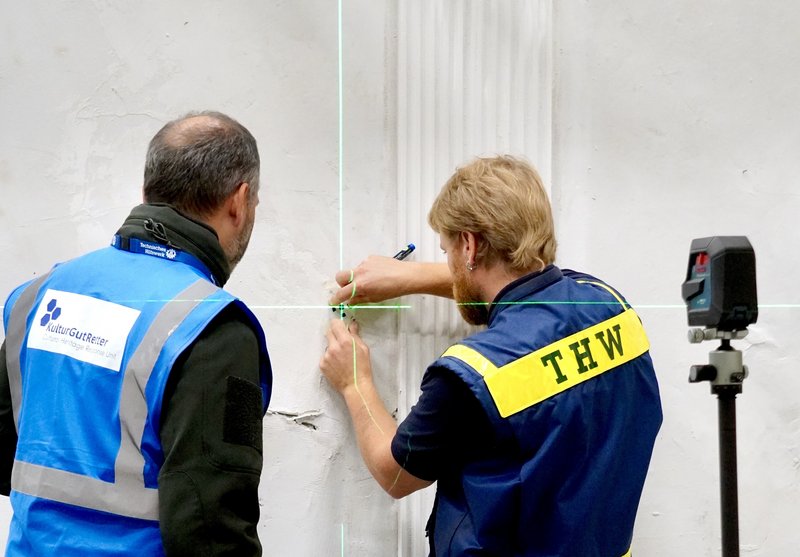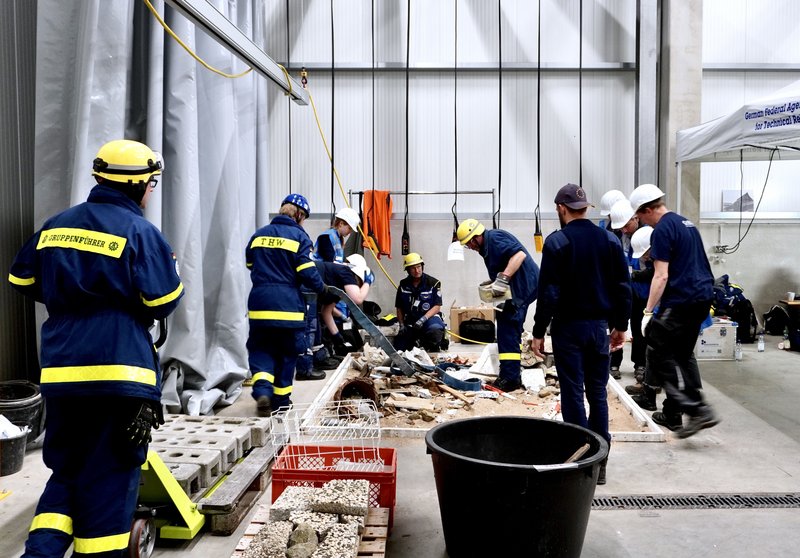From trainee to trainer
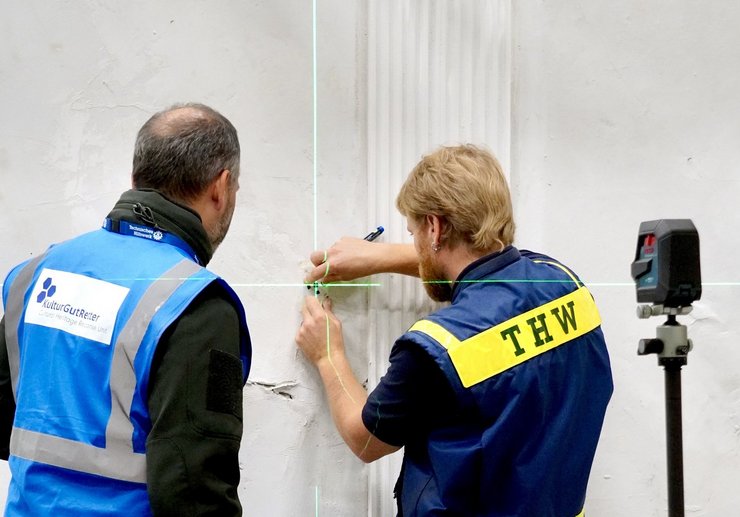
Vernetzte Expertise zum Schutz von immobilen Kulturgütern © DAI // Doris Fleischer
From September 22 to 24, 2025, around 60 volunteer team members participated in a practical station training at the THW logistics center in Hilden as part of the KulturGutRetter project. The training specifically prepares the Cultural Heritage Response Unit (CHRU) for international missions to protect cultural heritage in the event of a disaster.
For the second time, the KulturGutRetter project partners – the German Archaeological Institute (DAI), the Leibniz Centre for Archaeology (LEIZA) and the Federal Agency for Technical Relief (THW) – organised a several-day training course in Hilden. Following the first training course in 2024, around 80 team members were trained. This year, around ten of those graduates were involved as trainers. The new training cycle therefore directly benefits from the expertise that has been developed within the team. „The disaster training with the CHRU was a very valuable experience for me. Simulating emergency situations in buildings and working as a team enabled us to establish the correct priorities and learn from one another. The interdisciplinary exchange and the strengthening of communication, understanding and trust within the team were particularly enriching,' said architect and trainee Laura Pecchioli. „I have participated in numerous national and international missions with the THW. As a trainer, I am happy to pass on my experience to new CHRU members. The station training was professionally prepared with great commitment and passion. All participants were impressed by the depth and diversity of the training," adds THW trainer Thomas Schlunck..
Practical training for emergencies
Experts in movable and immovable cultural heritage, along with THW emergency response teams, are collaborating to bridge the existing gap between disaster management and cultural heritage preservation. This partnership is developing unique expertise in providing rapid support for endangered cultural heritage.
During the training, the team members familiarized themselves with the equipment and workflows of the CHRU international response unit. Two halls at the THW logistics center were equipped for circuit training. One was a mobile laboratory for the emergency conservation and initial care of movable cultural assets. Experts use the individual modules of the laboratory for photographic documentation, dry cleaning, wet cleaning and packing, in order to learn the workflows for protecting cultural assets of all kinds. In an emergency, such as an earthquake, flood or fire, CHRU members must be able to record, secure and stabilise objects of all kinds made from a variety of materials. Meanwhile, other team members practised procedures for securing immovable cultural assets, such as damaged buildings, based on minimum standards. Modern surveying techniques such as tachymetry, 3D laser scanning and GNSS were employed alongside architectural backdrops to document and assess damage to buildings, and to carry out stabilisation measures. The collected data was entered into a specially developed digital documentation system that enables structured collaboration. In real-world applications, this information will ultimately be handed over to the relevant institutions.
Networked expertise for the protection of cultural heritage
In the future, the CHRU's interdisciplinary team of cultural heritage and disaster management experts will be able to deploy worldwide. The unit relies on the commitment and expertise of volunteers. Once training is complete, around 150 operational volunteers will be available from the CHRU's personnel pool, including architects, engineers, restorers, conservators, IT experts and disaster management experts. Station training forms part of a comprehensive training programme that also incorporates online training, advanced technical courses and simulation exercises, all of which are tailored to the requirements of civil protection and disaster management, as well as the needs of the cultural sector. By the end of the year, the multidisciplinary CHRU team, unique in Europe, will be fully operational, ready to protect cultural heritage in the context of international disaster relief. Knowledge gained during operations will then be incorporated into training for the next generation.
Press coverage (in German)
To listen to:
- Contribution in WDR 3 Mosaik
- Contribution (from 24:25) in WDR 5 Westblick - aktuell
To read:
- Article in the Süddeutschen Zeitung (SZ)
Kontakt
Dr.-Ing.
Tobias Busen
, Wissenschaftlicher Referent für Baudenkmalpflege und Kulturerhalt an archäologischen Stätten
Tobias.Busen@dainst.de
Doris Fleischer
, Pressereferentin und stellv. Leitung Kommunikation
Doris.Fleischer@dainst.de
DAI Pressestelle
Podbielskiallee 69
14195 Berlin
Tel.: +49 (0)30 187711-120
Mail: presse@dainst.de
Partner
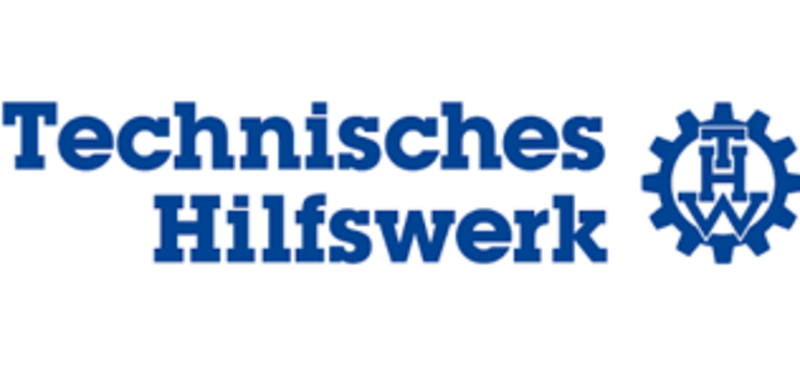
Bundesanstalt Technisches Hilfswerk (THW)
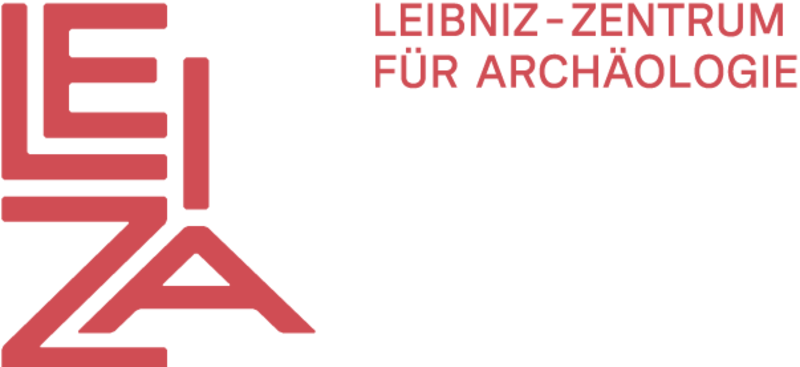
Leibniz-Zentrum für Archäologie (LEIZA)
Förderer
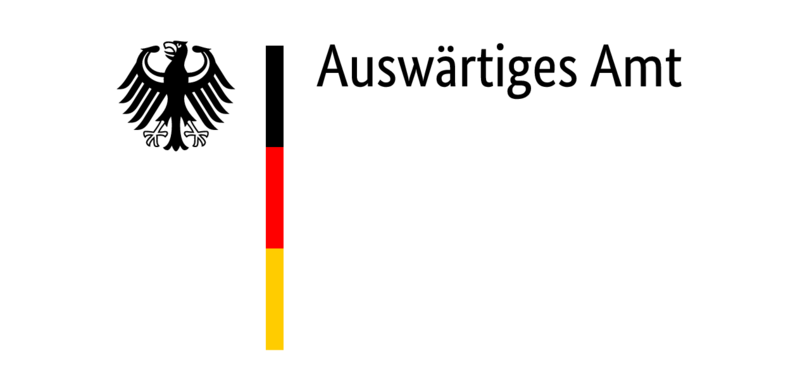
Auswärtiges Amt
Downloads
Pressemitteilung KulturGutRetter Stationsausbildung Hilden herunterladen.
